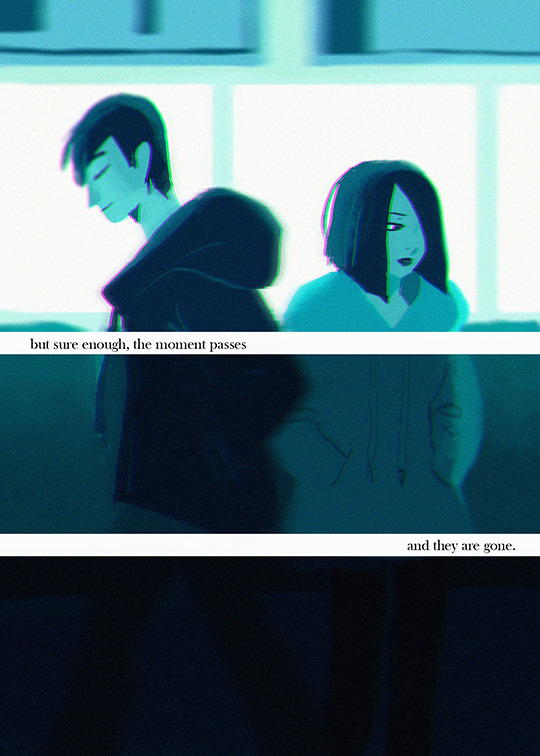hello this is my art blog!! the header is not mine :) My insta: www.instagram.com/ink.ella/
Don't wanna be here? Send us removal request.
Note
Congratulations on the storyboard artist position at Cartoon Network! When it comes to storyboarding, what type of practice/warmups do you do to improve your skill in storyboarding? I heard that doing timed gesture drawing helps when if comes to getting quick posses.
Storyboarding is a LOT of things. You’re juggling being a camera man, director, writer, and actor. Here’s some advice that I recently gave to someone else asking about storyboards:
1) Do thumbnail studies of other films or shows and analyze why I like them to learn from it. Not limited to just cartoons, do live action too. It will help you identify camera placement (close up, medium, wide shot) and movement (pans, truck ins/outs, banana pans, etc.) and what they’re used to convey.
2) Make comics. Helps convey that you know how to write a story.
3) Do an actual storyboard that [potential employers] can reference and know that you understand how to work a camera.
4) Most likely learn how to use flash or storyboard pro so you have experience
5) Force yourself to draw backgrounds more. At least some blocky stuff because you’re gonna have to do at least grid planes to know where things are placed to help out the background designers
6) ALSO don’t forget action notes! For most shows, especially action, you have to describe everything the characters are doing, if the camera pans or trucks out, if there’s animated effects, ect.
7) Improving your draftsmanship/actual drawings. That’s where the gesture drawing and life studies help.
There’s tons of other things that most likely need to be learned but that’s my two cents. Hope that helps!
419 notes
·
View notes
Photo

UPDATED 1/25/18 - SEE BOTTOM FOR UPDATE
Hi! To begin, I want to make note that I’m not a recruiter nor am I familiar with what each department is looking for exactly, as each area is bound to be different and I’m located in Publishing.
What I can do however, is point you in the direction of some resources you might find helpful. I will also include things I learned/saw as I was going through school, and looking for work and what helped me get found as an artist.
To cut to the chase, here’s the application guidelines for Walt Disney Animation. (Link Broken - See update 1/25/18 below)
Now, their submissions page is pretty awesome because it’s very clear and concise. They outline what they want, how they want to see it, and even suggest what you should be submitting based on several types of jobs you might be applying to.
For example, to quote their application guidelines page:
“Reel and Portfolio Formats
Your submission should represent your skill set and representative process samples such as sketches, gray scale models and/or works in progress.
· Modelers should include wire frames and turnarounds.
· Riggers should display tool sets.
· Animators should include a variety of physical movements and actions, but must include facial animation.
· Look Development should include texture paints, maps and the final look, if applicable.
· Story and Visual Development Artists should present sketchbook samples as well as finished compositions.
Life drawings are not required, but preferred for all submissions. We ask that you not show work currently in production and/or under confidential guidelines at other studios or companies. We understand that this may limit the showcase of your capabilities. If this is your situation, we recommend that your submission display only the work available to the public with an indication that a later submission will be provided once approved or released.”
I suggest heading over and reading the full page to get more info.
As for what to include in flat portfolios, that depends again on who you’re applying to, what job you’re applying for, and what they have asked to see.
Life drawings are common to include as they can show how you handle form and mass as well as weight and a line of motion/line of action. If you want to see some good examples of life drawing, a webpage called ‘The Unofficial Disney Animation Archive’ seems to have an older copy of the ‘Walt Disney Feature Animation Sample Portfolio for Animation Internships’ on their page.
I’ve been to two schools (One for a BFA in Animation and one for a MFA in Computer Animation), had different professors/instructors, and dealt with putting together portfolios (for job hunting) on many occasions. Different types of portfolios I’ve put together included flat work, character design, backgrounds, storyboards, and in some occasions demo reels for both animation, as well as modeling/texture work.
If you’re applying to a particular job, you should make the portfolio for that job posting (especially if they come right out and tell you what they are looking for).
Essentially and ultimately, you want a nice, professional portfolio. Something clean, easy to view, and showcases only your finest work. If you’re putting together your portfolio and you’re feeling iffy about a piece, ask for an opinion from another artist, or exclude the piece if you feel it’s not your best work. My best pal Kyle has seen my portfolio countless times over the years as I finished school and began applying for work. He never sugarcoated anything and readily told me when I should leave something out and what I might want to think about including. That was the most helpful for me, as it helped me make sure I was submitting only my best work. If you don’t think you know anyone who would be able to take a look at your portfolio, there are a lot of art forums, online clubs, and webpages where you can share your portfolio and get feedback. Excuses are for silly gooses and you rock, so go get em! :D
Here are some things I’ve found that have been excessively helpful in making a portfolio and applying:
Read the application requirements for requirements (both of the format for submission, and for any requests on the content). Often, a studio or company will outline specifically what they want for a portfolio submitted. It could be just a demo reel (no flatbook), just a flatbook, both a reel and flatbook, or it could even be just digital files in a specific format. If they ask for something particular, you should give them what they ask for. The same goes for schools. They will often tell you what kind of examples they want to see. Same goes for what they don’t want to see. If they come right out and tell you “No Sci-Fi” or “No Superheroes” then don’t include that. A lot of simple mistakes can be avoided by reading their requirements.
Make each page identifiable. Put your name and your contact email on it. You can do this and still keep your portfolio looking good. Plus, if something happens and pages are separated or someone takes a page to show someone else (you never know!) having your information on there ensures they know whose work they’re looking at.
I’ve gone down the road of having portfolios printed out and bound. I found that frankly to be the biggest waste of time ever. You’re an artist. You’re always creating new work, and you’re doing yourself a huge disservice by locking yourself in to a set portfolio. Besides not being able to include your newest (and better) work, you can’t really fit the portfolio to the application. My recommendation would be to first see what kind of presentation they’re looking for and then putting something together using a book you can slip pages into. Now, this won’t always work as some places I’ve applied to have specifically requested “no portfolios made with the plastic pages that you slip the work into”, or “no binders”, but in most instances, that’s not the case. First and foremost, send them what they ask for. Just make sure you have a way to keep your portfolio UPDATE AND CURRENT. Like I said—you’re always making stuff. Make sure you show off how good you’re getting!
Proofread everything. Absolutely everything. Your resume, your portfolio (especially if you include descriptions on pages), your business card, and your portfolio webpage (if you have one). You would be surprised at how easy it is to make little mistakes and misspellings. You would also be surprised at how easy it is to avoid them. It never hurts to have a friend or relative read through it just to see what they think and to see if they catch any mistakes you might have missed.
Online portfolios. U GOT ONE? I hope so! I cannot stress enough how important it is to have an online portfolio especially in this day and age. There are so many wonderful freebies and low cost options out there, and you have a lot of resources to make a super excellent rad portfolio! There are a lot of pros to having an online portfolio:
It’s extremely easy to keep your work updated with your best material! Made something new? ROCK ON AND SHOW IT OFF!
It’s super fast and easy to submit work! Many companies now accept online portfolio links. It’s quick, and easy to send them your portfolio, and get the jump on a new job posting if they accept your work as a link (or even uploaded as a portfolio PDF and such).
You never know who might see your work. Omigosh! That’s a great thing because sometimes a job comes to you! How do I know? That’s how I got my dream job. My work was seen online, and I was hired as freelance. That led to my full time job with Disney. More of a reason to have yourself a nice portfolio online!
With online portfolios, if you’re into big fancy pages with special features and such (or that’s the job you’re angling to get work in!) then you can have that, but if you can’t make that—don’t worry! A nice clean simple and concise portfolio can be just as powerful! Your work should do the talking. The same goes for an actual portfolio—don’t gotta go overboard with fancy frills to make a good impression :)
As for “How can one make their portfolio stand out?” That can depend. A fair bit of what I mentioned above is important. You will want to submit only your best work, and what you are most proud of. Your portfolio is a representation of what you do, and ultimately who you are. Are you serious about the work you do? Are you more lackadaisical about it? Your portfolio is a very important impression, both as an application sent off, as well as in person.
A lot can go into the production of portfolios and I’ve seen things all over the board concerning how they’re done. We would see portfolios all the time at school. Professors would show them to us as examples. We would see our classmates’ portfolios and we would see professional portfolios. All sorts of portfolios. I have also seen a lot of them when I visit conventions like Siggraph and CTNX. Walking around, I’d meet people and we would show each other our work. Walking around the job/talent fairs will also lead to you seeing a lot of different portfolios. They’re all different.
Standing out can be a double-edged sword. If you’re not careful, it might backfire.
The Art Career Project has some great tips on ‘How To Create The Best Art Portfolio’ and include things you should look into doing, as well as things you should avoid.
They make note of how things can work against you if you try too hard to stand out. I’ve seen a fair share of portfolios where people try too hard and get gimmicky and it works against them. Read up on their great suggestions and keep them in mind as you start selecting pieces for your portfolio.
As for your own work, Brenda Chapman posted on her blog about how you can make your portfolio stand out. She elaborates on some things you can include in your portfolio for work as well as makes note of standing out by showing them who you are through your work.
Ultimately, there’s a lot you can do with your portfolio and plenty of room for you to make it your own. Your work, presented well, can go a long way to stand out. The rest is up to you as you create your art and build up a body of work to include in the portfolio.
I hope this helps! Feel free to ask me anything if I might have left something out :D
Update: It looks like Walt Disney Animation Studios updated their Application Guidelines page this week, and it looks like more information might have been added! Awesome!
UPDATE 1/25/18: The earlier link for Portfolio/Application guidelines seems to be broken as they’ve updated the page, so here’s some updated links that you will find helpful:
Walt Disney Animation Application Guidelines and Portfolio/Reel Tips
When you visit this page, scroll down to the Portfolio selection and click the list on the right hand side. You will see bubbles pop up with the various things they want to see in your portfolio based on what focus you are applying for. Here, I clicked on STORY and a helpful bubble popped up. Go check it out HERE and I hope this helps you out!

4K notes
·
View notes
Photo

Tuesday Tips - The Mask Helps to figure out the shape of eyes in perspective by thinking of its surrounding area instead of guessing it. -Norm #tuesdaytips #100tuesdaytips #grizandnorm #themask #drawingtutorial #drawingtips #arttutorial
29K notes
·
View notes
Photo





DreamWorks Storyboarding Tips by Rob Koo.
Via Ben Caldwell.
11K notes
·
View notes
Photo
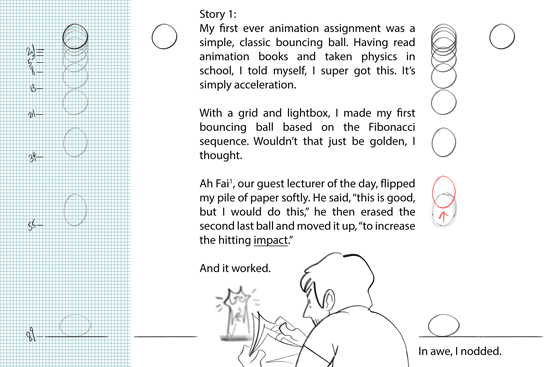

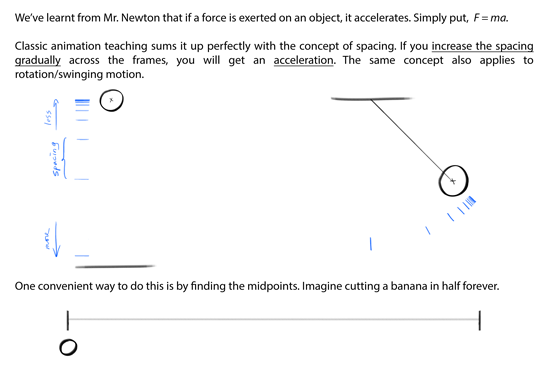

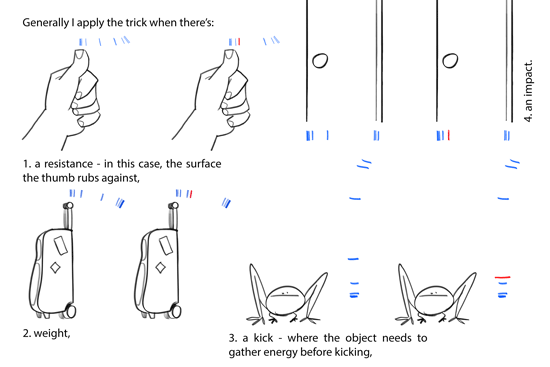
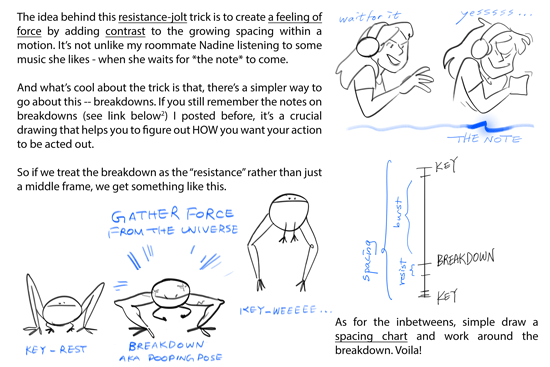
1. Ah Fai was a chief animator for McDull’s animated features. He’s super cool. Ultimate senpai.
2. Previous post on breakdowns right here
Some thoughts on acceleration and force
I presented this in the order of how I slowly understood the trick of delivering force - first an abstract concept of impact taught by Ah Fai, then a more complicated discovery on the acceleration pattern, last back to a more abstract concept of breakdowns.
Like I’ve previously stressed, 2D animation is everything but one single approach. There’s no one rule that rules them all, but interchangeable ideas with math, or physics, or music, etc. There’s no “perfect” animation either, but what is perceived as organic and dynamic. E.g., using the Fibonacci numbers to animate didn’t bring me a perfect animation! On the other hand, a tiny change in the pattern could already make the feeling of force so much more powerful.
Not so much of a tutorial than a personal experience. I hope you find this interesting hahaha
159K notes
·
View notes
Text
Vis Dev advice from CTNx
This year I was fortunate enough to be able to go to CTNx in Burbank CA. It was a truly incredible experience and I’m already thinking about plans for next year. I took a visual development portfolio with me and got reviewed from everyone I could, so I thought I’d share and spread the wisdom! These are the big take aways I got from the reviews: * Show something imaginative. A unique voice will win every time. * Show the development process, a finished illustration isn’t really important. * Clearly communicate what you’re trying to describe. Materials and textures should read instantly, otherwise it will always look unfinished. This does NOT necessarily mean it has to be fully rendered though. * Maintain consistency throughout a section, but show variation throughout the book. * Simplify designs when possible. * Seriously, nobody cares about a finished illustration if you’re not planning on being an illustrator. Focus on the development process. Thumbnails, sketches, technical drawings, explorations, composition, color studies, ect. * Not all critiques should be weighted equally, put more stock into the critiques from artists who work where you want to work. * It’s okay to include simple drawings, and in fact they are often preferred! * If you know what you want to do, make your portfolio only that thing. * Always practice your life drawing ( I heard that one a lot…) The biggest thing to remember for next time will be to always go with questions prepared. It’s impossible for the reviewer to give you the information you’re looking for if you don’t ask for it. Jesse Cowan recommended that next time I ask, “Do you see any patterns in my work that I should try to avoid, or continue to develop?” <- if only I had that ready at the start of the expo. To those who reviewed me, thank you so much for your advice and encouragement. (It’s going to be the fuel that will get me to next year!) My only regret is that I didn’t ask more people. Call it nerves, or fear, or panel lines (curse you panel lines!) but I just didn’t get to ask many of my favorite artists. Lesson learned. Overall, CTNx was simply wonderful. You have a year to save and prepare, everyone should be going if they can!
788 notes
·
View notes
Video
vimeo
I’m excited to present: MY GRADUATION FILM “Mr. Carefree Butterfly”
I want to thank the incredible talents that I had the privilege to collaborate with, and everyone who supported me during this 4 year long journey at CalArts.
<3
16K notes
·
View notes
Text
THIS IS SO HELPFUL GAHHHHHH
Accepted CSSSA animation 2014 portfolio analyzed
Hello friends! Soap here! Just yesterday I learned that I was accepted into CSSSA this summer for animation! A dream come true!
I also learned yesterday that some amazing artists got rejected, they and myself are confused as to why. Seriously. Amazing artists got rejected. I’m still bummed out.
To help you guys out, I thought that I would analyze my own portfolio, and try to dig out ideas and traits that might help people who were accepted/rejected possibly realize why they were accepted/rejected. Maybe this will even give next years applicants some tips on what to include!
Just to let you know, I just figured out yesterday that I was accepted, so I am no means a CSSSA veteran. I just wanted to possibly help out my fellow friends!
PLEASE. DO NOT COPY OR REPLICATE MY PORTFOLIO. THAT’S EXACTLY WHAT CSSSA DOESN’T WANT.
Let’s start with a bit about me…
Name: Madison, but you can call me Soap
Age: 17
Year: Junior
Gender/Sex: Female
Location: Michigan
I’m a pretty standard applicant. I’m a junior going into my (yikes) senior year, and will be applying to colleges next year! Ahhh! I’ve heard from some people that CSSSA likes to accept people going into their senior year or junior year, so that may or may not have given me a bonus. Really, I think it comes down to skill level. I am from out of state, so I was one of the 20 people who were chosen. CSSSA only accepts up to 20 out of state each year, across all majors.
This year, I’ve heard people say that 260 people applied. CSSSA accepts about 50 into the program each year. Yikes! A 19% acceptance rate!
It’s competitive yes, but I think CSSSA wants to weed out the people who are too terrified to apply. Seriously, GO FOR IT! SHOW YOUR STUFF! YOU ROCK!!!
Let’s get to my portfolio for animation…
With my application, I was largely focused on these two statements
“The applicant is highly encouraged to include submissions that explore a wide range of fine arts styles and ideas other than cartoon art.”
and…
The review committee insists that all work is presented with the utmost care and attention. The artwork / animation you submit should be original and from your own experience and imagination. The committee wants to see YOU reflected in the content and distinctive style of your artwork. Be yourself!
So, I mainly focused on the use of different media, and expressing my own style, staying far away from any other artist’s style. Largely, I wanted to just BE MYSELF. If I love lizards, I LOVE LIZARDS, and CSSSA needs to know that!

This piece is called “The Creator.” I used it for assignment A for the prompt “One drawing or painting that shows what you feel is unique about yourself” This is a digital piece, drawn (err, painted…) in Photoshop.
What I aimed to show here was the following…
-My characters/creations
-My digital art skill
-My optimism and excitement for creating
With my characters, I wanted to show diversity in them. I tried to make all my characters distinguishable from each other, especially my human characters. I also included my creature characters, which I feel to be original and interesting. When digitally painting them, I was largely focused on their form, and how I could manage to relate it to realism.
I spent a total time of 2 weeks on this piece, and it is still the best digital painting I’ve ever done. I really wanted to show my chops here, and show CSSSA “this is what I can do!” Do this! Really! Apply with your absolute best work! Or knowing the deadline, put something together a few weeks/months in advance that you know you can spend a lot of time on. I painted an environment for myself to be placed in, which is important! Characters in environments is a great thing to include! DO BACKGROUNDS.
I know that many animators are optimistic and fun people, so I wanted to show that here. I heard from an interview from a Sheridan professor of animation that “characters with guns make me nervous.” Make your apps happy and fun! Animation is fun! Animation is imaginative! Yeah! Animation! Yeah! Creating things!!!
Documentation wasn’t a big issue here, because the work was digital.
Now onto assignment B… which is “One drawing or painting of any subject that interests you. You might consider an emotion, memory, song, place or thing. Provide an explanation of the work on a separate sheet of paper, and include the poem, or lyrics if appropriate.”

This is an oil on canvas painting of my bearded dragon lizard Alfredo. I call it “Portrait of Alfredo.” Here, I wanted to change up my medium. I wanted to show that not only did I know how to paint digitally, I know how to paint with oils! That’s important! CSSSA wants to see variety! “Wide range of fine art styles.”
Here’s my prompt for assignment B:
My lizard Alfredo is an essential part of my life. As an only child, he acts in the place of a brother. Alfredo’s actions, expressions, and small adventures always manage to brighten my day. Having him as a pet makes me a more optimistic person. To immortalize my lizard, I set out to paint a portrait of him. For this piece, I stretched a canvas, and then painted Alfredo using oils. My main goal was to make the portrait have historical elements, as well as comedic ones.
History plays a very large role in my work. I draw history both from my own observations, and accounts from textbooks and novels. I’m very interested in the ideas of character relationships and cause and effect. History holds many stories that largely explore these elements. The characters presented in history are all real and unique. I love reading about how historical figures interacted with each other and dealt with the situations at hand. Almost all of my stories contain deep history, or are inspired by a historical period. For example, one of my narratives is largely based off the Gilded Age. Politics also influence my stories, tying right along with history, where the process and the outcome are both very important
I also have a strong interest in reptiles and birds. Many of my characters are based off these animals. I enjoy taking features from reptiles and birds and combining them with other things. These other things may range from inanimate objects to other animals. My creations can either be something serious, like an anthropomorphic businessman eel, or something goofier, such as a strawberry bird. By playing around with combinations, I feel that I open up many possibilities for interesting and unique combinations.
The main topics I focused on were my love for my lizard, history, and hybrid creatures.
I especially wanted to hit on history, because I feel like it relates to story telling, which is an incredibly important part of animation! Personally, I’d put story before artwork any day.
The lizard head is painted from a photo, the fabric and salad bowl are painted from life, and the rest is painted from my imagination.
Documentation was a bit more of an issue with this piece. When taking a picture, my painting would get a nasty glare, as you can see. In Photoshop, I tried to minimize this to the best of my abilities. Try to stay true to the actual color of the work when color correcting! Documentation and display of your work is just as important as the piece itself!
This was my piece for assignment C… “One drawing or painting that you feel demonstrates your technical skills.”

I included a collection of figure drawings! All of them are in a different media, which I felt was important. I have a line drawing, a colored pencil figure, a marker figure, and a watercolor figure. Once again, variety is cool!!! Figure drawing is very important to animation. CSSSA probably wants to see your observational skills with a figure! Go out! Take a figure drawing class! You’ll be glad you did! Sadly, my class can’t do naked models D: I aimed on showing form, and hopefully some movement. Ha ha… our models are really never in dynamic poses D: Yay! Observational life drawings!!!
For my animation I used this: https://www.youtube.com/watch?v=XWfJpVyMCHM
Don’t worry! Your animation does not have to be a 2 minute ordeal! It can be a simple action! Like, a few seconds. This also doubled as a final for one of my classes, that’s why it’s so long. I spent 2 months working on it, maybe even 3… Yeah, the animation is really choppy, I’ve gotten SO MUCH BETTER since submitting this. This animation does contain (choppy) movement, and a story, and my own personal music! I think possibly the story was the thing CSSSA was probably most interested in? Stories are really important!
These were my other prompts I submitted:
Madison Stubbs E #1
Last year, I applied to Interlochen Arts Academy, a well-known art high school in Traverse City Michigan. For my application, I had to piece together a portfolio out of nothing. I had never taken a formal art class, primarily being self-taught. To combat this, I enrolled in my first art class at my local community college. Throughout the semester I saw major improvement in my work. With new and better art in hand, and after an interview with the visual arts director, I was accepted into Interlochen.
The visual arts director suggested that I’d take on the summer program to push my art further before the fall. I did so, attending the advanced drawing program over the summer at Interlochen. The program was three weeks long, classes being six hours a day. Our class was challenged to create several major drawings in a short time period. I was very proud of what I accomplished, once again seeing a major improvement in my art. Overall, I produced five major pieces, as well as three smaller exercises, which helped me be much more prepared for the school year.
This app focuses on challenges that I experienced with my artwork, and challenges that I faced at a similar summer camp. I wanted to show my dedication to my art, as well as my experience working hard at a 3 week camp with CSSSA’s similar expectations. Write about something that you truly worked hard on, or an experience that made you work really hard. I think if it’s an art experience, that’s a bonus!
My other prompt was..
Madison Stubbs E #2
To me, animation is the ultimate vessel for story telling. It allows for an escape from everyday life, leading to a fantastical adventure. My personal stress relievers are my stories, untangling me from my anxiety. By focusing on the problems and conflicts of my characters, it helps me take my mind off of my own problems, and even helps solve them. By telling stories, I become a much more optimistic person.
Animation is a medium that can definitely affect people’s lives. I aim to tell stories that will have the same effect on audiences as they do on me. Animation is wonderful, due to its ability to depict emotion and movement that ties right along with narratives. I want to tell stories that will impact both young and old audiences. Also, I aim to create characters that stick with people well after a viewing. Hopefully those who view my films will pick up something they can take with them, anything ranging from laughter to a life changing moral.
My love for animation!!! Animation is great! Animation is awesome! Let CSSSA know this! Relate it to yourself, relate it to others! JUST TALK ABOUT HOW PASSIONATE YOU ARE!!!
My letters of rec were from my painting teacher and my digital arts teacher.
I hope this helps some people out who are planning on applying next year! Best of luck to all of you! I apologize if I sounded stuck-up and a know-it-all. (which I probably did, OMG I’m so sorry) Just doing my best to help! If you have any questions, send me an ask!
Thanks!
-Soap
115 notes
·
View notes
Note
Hello! If it's not too much of a hassle, would you mind posting the brush settings for the oil pastel and fluffy watercolor? I love the way they look but can't seem to find them on Medibang :( Thank you!!


There you go!
this took awhile, I keep forgetting to answer questions in my inbox :’D
989 notes
·
View notes
Photo

a study on drawing heads at different angles :V
17K notes
·
View notes
Photo
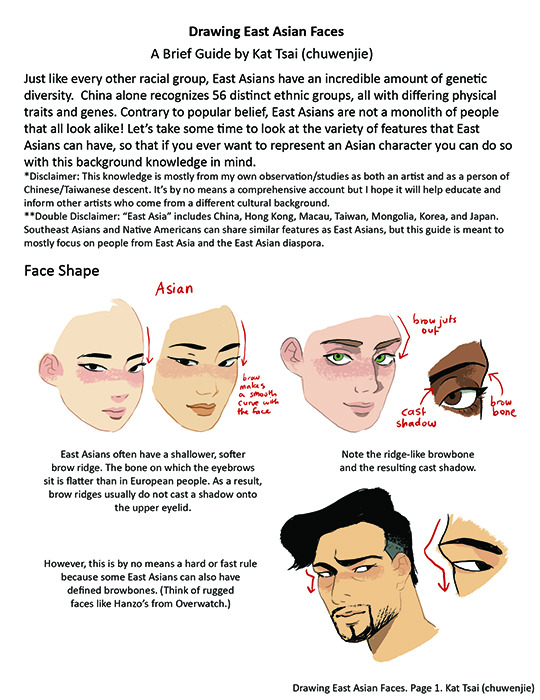
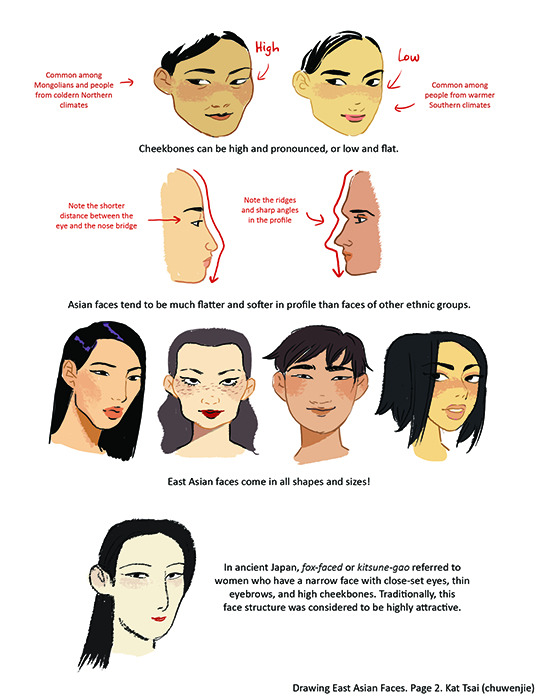
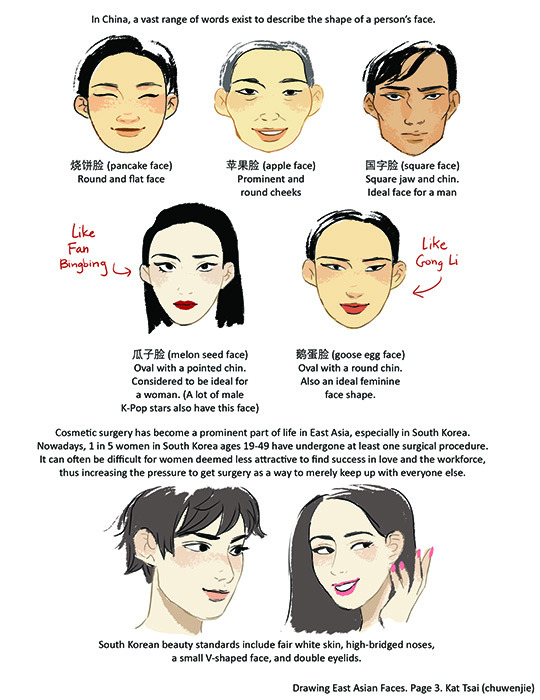
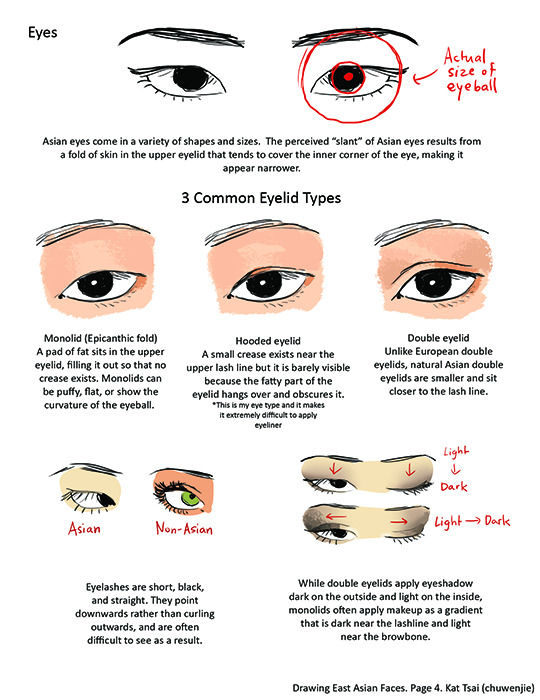
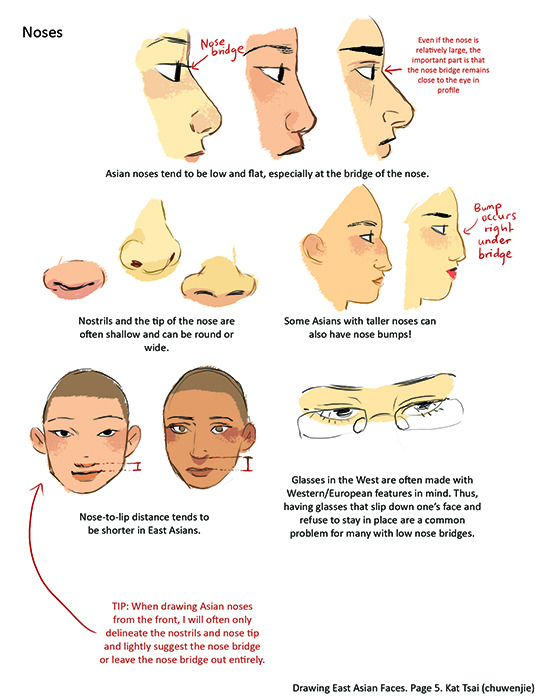
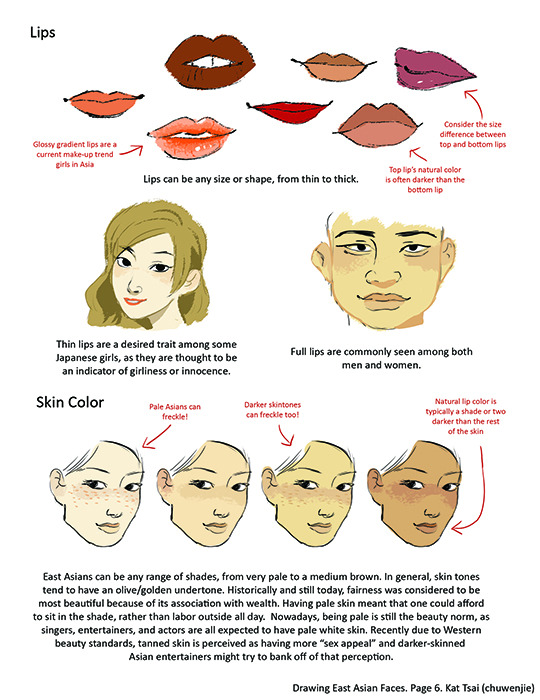
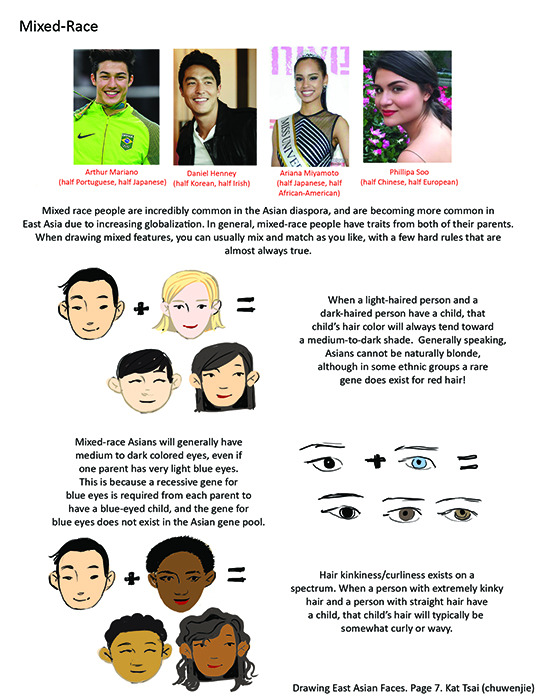
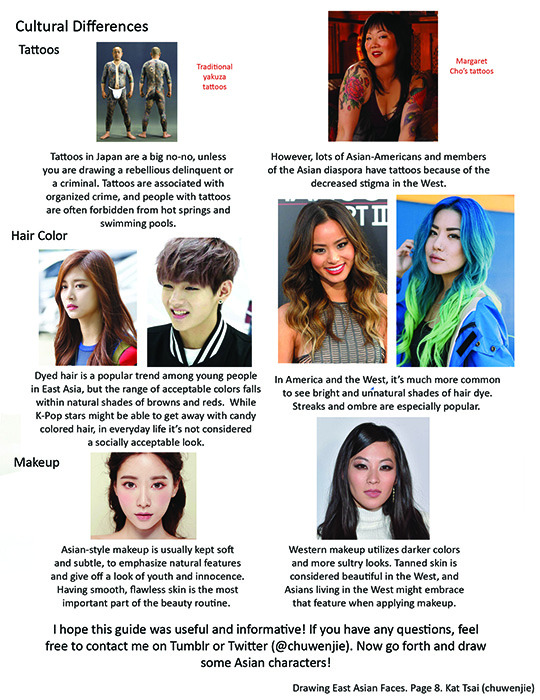
A compilation of stuff I know about drawing Asian faces and Asian culture! I feel like many “How-To-Draw” tutorials often default to European faces and are not really helpful when drawing people of other races. So I thought I’d put this together in case anyone is interested! Feel free to share this guide and shoot me questions if you have any! I’m by no means an expert, I just know a few things from drawing experience and from my own cultural background.
263K notes
·
View notes


